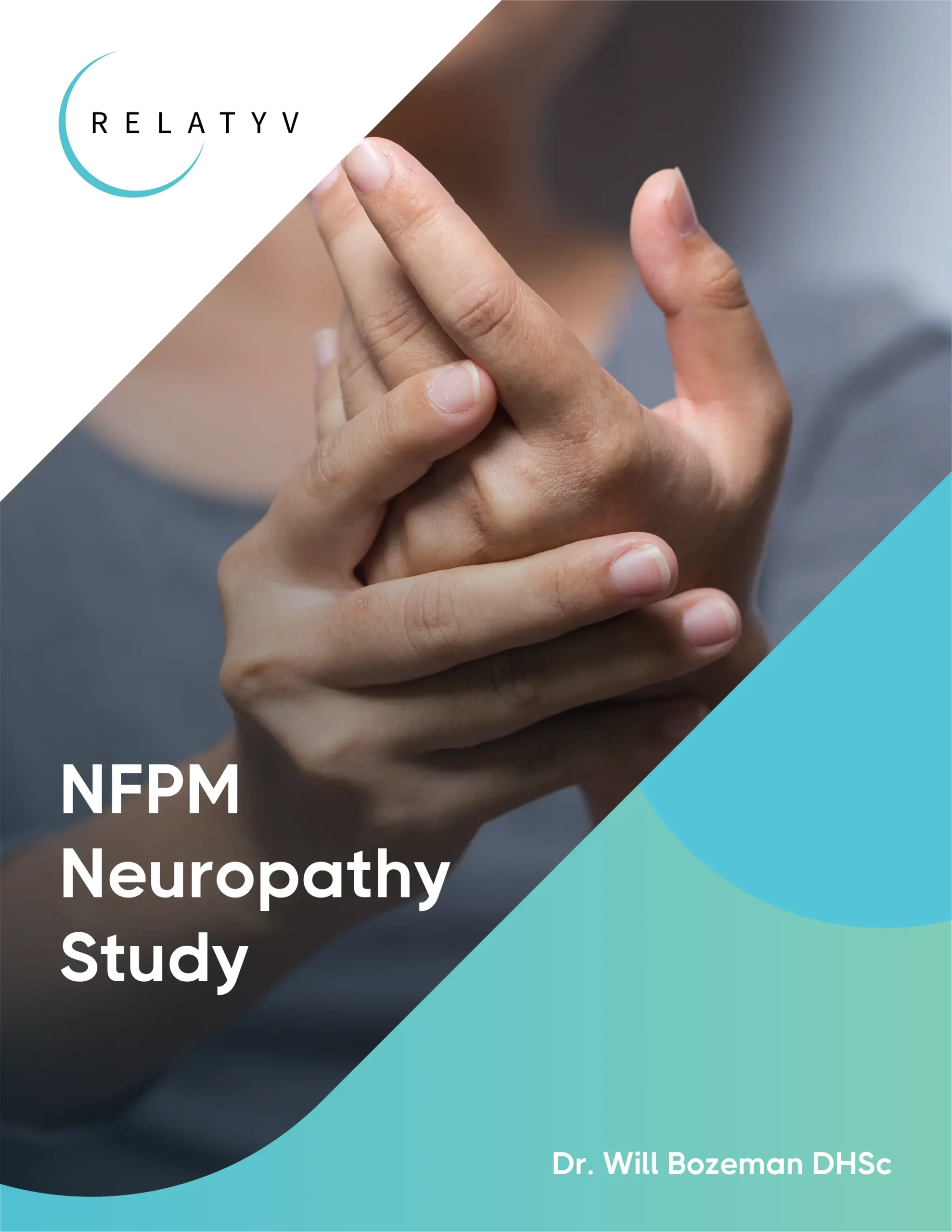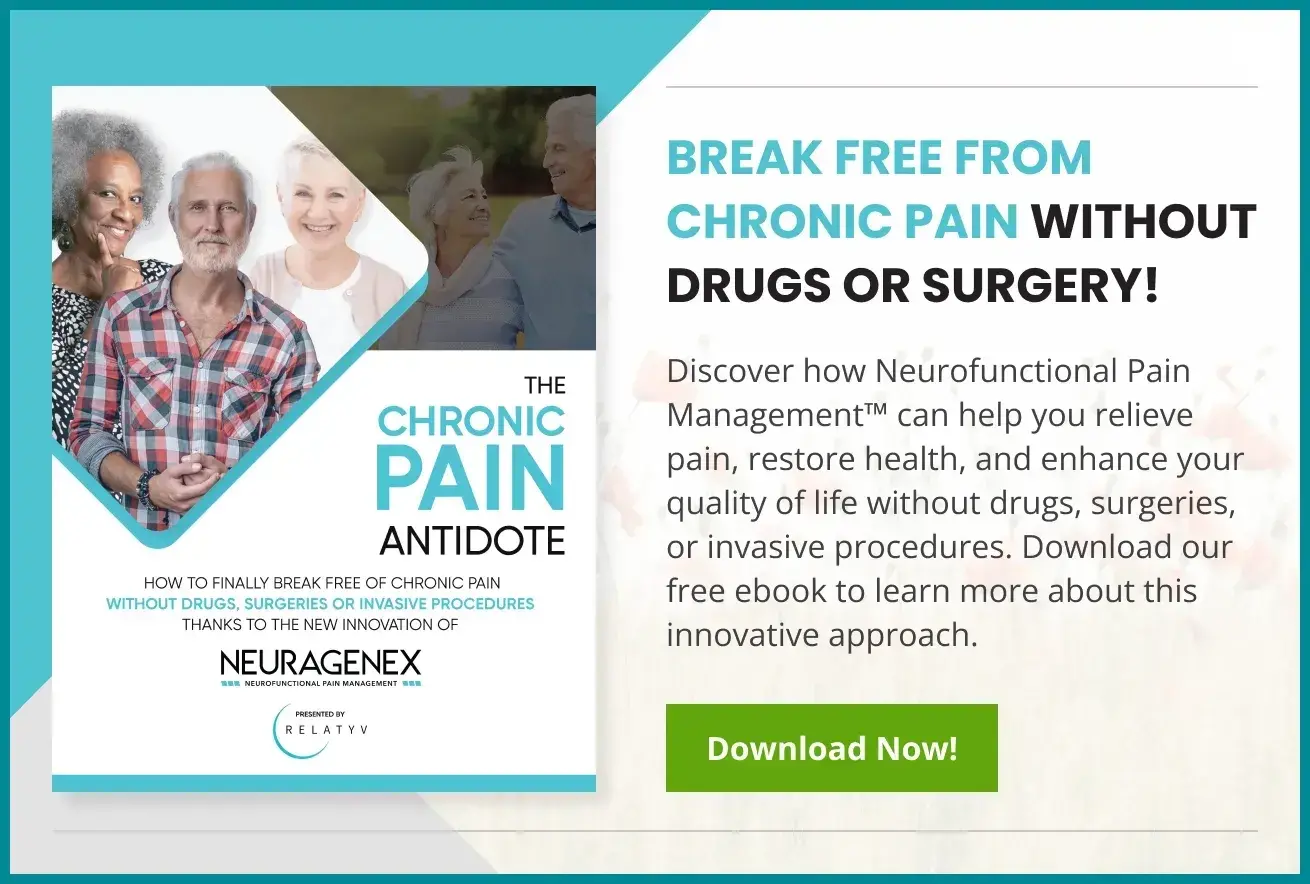Substance use disorder (SUD) is a condition defined by the repeated use of substances, despite their harmful consequences. According to the U.S. Department of Health and Human Services (HHS) Substance Abuse and Mental Health Services Administration (SAMHSA), 48.7 million people aged 12 or older struggled with an SUD in 2022 alone.
Substance abuse not only affects the individual but also has significant impacts on their loved ones and society as a whole. Fortunately, there are various treatment options available to help individuals overcome SUD and lead a healthier, more balanced life. Neuragenex NFPM protocol can help manage substance abuse through medication reduction management.
What Is Substance Use Disorder (SUD)?
SUD is a mental health condition that involves the excessive and harmful use of substances, including drugs or alcohol. It is a chronic and relapsing disorder that affects people from all walks of life, regardless of age, gender, race, or socioeconomic status. SUD can lead to severe physical, psychological, and social problems if left untreated. It can also have a devastating impact on an individual’s family and loved ones. It can also lead to financial difficulties, legal issues, and even death.
Most Commonly Abused Substances
There are many kinds of substances that can be abused. The one thing that all of these substances have in common is their ability to cause addiction and dependence. Some of the substances that are most commonly abused include:
- Opioids: These drugs are derived from the opium poppy plant and include prescription painkillers like hydrocodone, fentanyl, and oxycodone, as well as illegal drugs like heroin. Opioids bind to the brain’s opioid receptors, which are responsible for regulating pain and pleasure. When opioids activate these receptors, they flood the brain with dopamine, which creates feelings of relaxation and euphoria. Over time, the brain becomes dependent on opioids to produce these feelings.
- Stimulants: These drugs increase brain activity, energy, and alertness. Some examples include cocaine, amphetamines, and prescription medications like Adderall and Ritalin. Stimulants can be highly addictive because they produce intense feelings of pleasure and heightened alertness.
- Sedatives: Also known as depressants, these drugs slow down brain activity and induce feelings of relaxation. They include prescription medications like benzodiazepines (Xanax, Valium) and barbiturates (Seconal, Nembutal). Sedatives can be dangerous when abused, as they can cause breathing difficulties and even coma or death.
- Synthetics: These are manufactured substances that mimic the effects of other drugs. Synthetic marijuana (Spice or K2) and synthetic opioids like fentanyl fall under this category. They can be extremely potent and dangerous, often leading to overdose and death.
- Hallucinogens: These drugs alter perception, thoughts, and feelings. They include LSD, psilocybin (magic mushrooms), and MDMA (ecstasy). Hallucinogens can be unpredictable and cause serious psychological effects.
Symptoms Of Substance-Related Disorder
There are several symptoms associated with SUD. These symptoms can vary based on what substance is being used, the frequency and amount of use, and an individual’s physical and psychological condition. Some common symptoms are listed below.
Behavioral Symptoms
Behavioral symptoms are actions or behaviors indicating a person is struggling with SUD. They are typically noticeable to those around the individual and may include:
- Neglect of responsibilities: This can include failing to show up for work or school, neglecting personal hygiene, and not fulfilling family or social obligations.
- Social withdrawal: Individuals may become isolated, avoiding social activities and withdrawing from friends and loved ones.
- Risk-taking behaviors: People with SUD often engage in risky behaviors such as participating in unprotected sex, driving while under the influence, or engaging in other criminal activities.
Psychological Symptoms
Psychological symptoms refer to changes in an individual’s thoughts, feelings, and moods that can indicate SUD. These symptoms may include:
- Craving: A strong desire or urge to use substances despite their negative consequences. A person may exhibit intense cravings when they are unable to access or use their drug of choice. This can manifest as physical and psychological symptoms, such as irritability, restlessness, and anxiety.
- Loss of interest: An individual may lose interest in previously enjoyable activities and hobbies, instead focusing all their time and energy on obtaining and using substances.
- Continued use despite consequences: Individuals with SUD may continue to use substances despite experiencing negative consequences such as relationship problems, legal issues, or physical harm.
Physical Symptoms
Physical symptoms refer to the physical manifestations of SUD. Physical symptoms will vary depending on the substance being abused but can include:
- Tolerance: Over time, individuals may need to use larger amounts of a substance to achieve the same effects as before. This is a sign of tolerance and can lead to an increased risk of overdose
- Physical dependence: With repeated use, the body becomes dependent on substances to function normally. If a person stops using abruptly, they may experience withdrawal symptoms such as insomnia, muscle aches, nausea, and vomiting.
- Unsuccessful attempts to quit: Despite wanting to quit or cut back on substance use, individuals with SUD may repeatedly fail to do so.
A Lump On The Tendon
Tendons are the connective tissues that attach your muscles to your bones. They form a bridge between the two structures, allowing the muscles to move your bones and joints for various tasks, such as walking, running, and lifting objects. Unfortunately, these...
Causes And Risks Factors
There is no single cause for SUD. It is a complex disorder that can develop due to a combination of factors. Some common causes and risk factors are listed below.
Biological Factors
Biological factors refer to genetics and physical characteristics that can make an individual more susceptible to developing SUD. Common biological risk factors include:
- Family history: Individuals with a family history of substance abuse or addiction are at a higher risk of developing the disorder themselves.
- Brain chemistry: Certain individuals may have an imbalance of neurotransmitters, which can influence their susceptibility to addiction. For example, low levels of dopamine have been linked to increased cravings and a decreased ability to experience pleasure, which can lead to substance use.
Environmental Influences
There are several environmental factors that can also contribute to the development of SUD. These include:
- Peer pressure: Individuals may begin using substances due to pressure from peers or a desire to fit in.
- Traumatic events: Certain traumatic experiences, such as physical or sexual abuse, may increase the risk of SUD. This is because many individuals turn to drugs or alcohol as a coping mechanism.
- Availability: Easy access to substances and exposure to substance use in the home or community can increase the risk of developing SUD.
Social And Peer Dynamics
Social and peer dynamics can also contribute to SUD. Some common factors include:
- Family dynamics: Dysfunctional family dynamics, such as a lack of communication or support, can increase the risk of substance abuse.
- Early exposure: Early exposure to substance use can increase the likelihood of developing an SUD later in life.
Mental Health Conditions
Mental health conditions, such as anxiety, depression, and trauma-related disorders, can increase the risk of SUD. People may use substances to cope with their symptoms or self-medicate. Unfortunately, substances can worsen existing mental health conditions and make them harder to treat. Therefore, individuals with co-occurring disorders need to receive integrated treatment for both conditions.
External And Behavioral Conditions
External and behavioral conditions can also contribute to SUD. These include:
- Stressful events: High levels of stress or ongoing stressors such as relationship problems, financial difficulties, or job loss can increase the risk of substance abuse.
- Poor coping skills: Individuals who lack healthy coping mechanisms often turn to substances as a way to deal with stress, difficult emotions, or trauma.
- Lack of social support: A lack of social support and healthy relationships can increase the risk of SUD, as individuals may feel alone and turn to substances for comfort or escape.
Examining How Chronic Pain Heightens Substance Dependence
Chronic pain is not only common, but it can also be a debilitating condition that has a significant impact on a person’s quality of life. It refers to persistent pain lasting for at least three months, and it affects millions of people worldwide. Chronic pain stems from various sources, such as injuries, medical conditions, or nerve damage.
Living with chronic pain can be challenging, and it can lead to significant changes in an individual’s daily life. One common issue that arises from chronic pain is the increased risk of SUD. Studies have shown that those with chronic pain are more likely to develop SUD compared to those without chronic pain. This is because chronic pain and substance use disorder share similar neurological pathways, leading to a higher risk of dependence.
Furthermore, individuals with chronic pain may turn to substances as a way to manage their pain. Prescription opioids are commonly used for pain management, but they carry a high risk of addiction and can lead to SUD if misused or taken for extended periods. This is especially concerning as chronic pain often requires long-term treatment, making individuals more susceptible to developing a substance use disorder.
Chronic pain can also take a toll on a person’s mental health. Chronic pain can cause frustration and hopelessness, leading individuals to self-medicate with substances as a way to cope. Unfortunately, this only exacerbates the issue and can lead to a dangerous cycle of pain and substance use.
How Is The Disorder Diagnosed?
SUD is diagnosed through a comprehensive assessment and evaluation by a healthcare professional. This typically involves:
- Screening: Healthcare providers may use various screening tools to determine if an individual meets the criteria for SUD.
- Clinical interview: A detailed interview is conducted to gather information about an individual’s substance use, medical history, and any co-occurring mental health disorders.
- DSM-5 criteria: The Diagnostic and Statistical Manual of Mental Disorders (DSM-5) is used to diagnose SUD. This includes specific criteria, such as impaired control, social impairment, risky use, and pharmacological criteria.
- Severity levels: The DSM-5 also includes severity levels for SUD, ranging from mild to severe, based on the number of criteria met.
- Differential diagnosis: Healthcare providers may also rule out other possible causes of symptoms, such as medical conditions or mental health disorders. Doing so ensures an accurate diagnosis and appropriate treatment plan.
- Physical examination and laboratory tests: Physical exams and laboratory tests may be conducted to assess for any physical health complications related to substance abuse.
Conventional Treatment Options
When it comes to treating SUD, there is no one-size-fits-all approach. Treatment plans should be tailored to the person’s specific needs. They may include a combination of the following conventional treatment options.
Detoxification
Detoxification, or detox, is the process of removing substances from an individual’s body. Detox helps individuals safely manage withdrawal symptoms while their body rids itself of substances. It is often the first step in treating SUD.
For somebody who is physically dependent on a substance, detox can be a difficult and sometimes dangerous process. Therefore, it is typically done under medical supervision to ensure safety and minimize withdrawal symptoms. Detox may involve medication to help manage withdrawal symptoms and round-the-clock medical supervision.
Rehabilitation
After detox, individuals may enter a rehabilitation program to address the underlying causes of their SUD and learn coping skills for maintaining long-term recovery. Rehabilitation programs may include various forms of therapy, such as behavioral therapy, individual counseling, support groups, and family therapy.
Medication-Assisted Treatment
Medication-assisted treatment (MAT) combines both medication and behavioral therapy to treat SUD. Medications may be used to help manage the physical and psychological withdrawal symptoms, reduce cravings, and prevent relapse. MAT is often used for opioid or alcohol use disorders. Common medications used in MAT include methadone, buprenorphine, and naltrexone.
Holistic Therapies
Several holistic therapies may be used to support the conventional treatment of SUD. Holistic therapies aim to promote overall well-being and help individuals develop healthy coping mechanisms. These can include alternative approaches such as:
- Yoga: Yoga can help individuals manage stress, improve mood and sleep quality, and promote relaxation.
- Meditation: Meditation can be used to reduce anxiety and cravings, increase self-awareness, and enhance overall mental well-being.
- Acupuncture: Acupuncture is a practice that involves inserting thin needles into various points in the body to alleviate physical or emotional discomfort. This is aimed at reducing cravings and improving overall well-being in individuals with SUD.
The Neuragenex NFPM Protocol For Substance Use And Pain Management
First of all, the Neuragenex Neurofunctional Pain Management approach can help you manage chronic pain without the use of opioids. This means that if you are struggling with chronic pain and have a history of SUD, we can help you break the dangerous cycle of pain and substance use.
Secondly, our protocol implements a non-rehab-based plan for SUD that utilizes Suboxone, which is a medication-assisted treatment commonly used for opioid use disorder. Suboxone helps to reduce cravings and withdrawal symptoms, thereby allowing individuals to focus on their recovery and rebuilding their lives. It’s important to note that out of all the opioid-based medication-assisted treatments, Suboxone has the lowest risk for abuse and dependence.
Our team also incorporates whole-person therapies into our protocol, including electroanalgesia, IV therapy, and lifestyle counseling.
Electroanalgesia
Electroanalgesia is a pain management technique that uses high-pulse electrical current to ease pain, boost blood circulation, improve mobility, and induce...
IV Therapy
IV nutritional therapy, or intravenous therapy, involves administering vital nutrients directly to the bloodstream through an IV. This type of treatment bypasses the digestive system, allowing for maximum absorption and utilization of nutrients by the...
Lifestyle Counseling
Lifestyle counseling is an approach to managing chronic pain that involves identifying, assessing, and modifying lifestyle factors contributing to an individual's pain. For example, lifestyle factors such as nutrition, physical activity, stress, sleep quality...
The Long-Term Effects Of Neglecting Substance Use Disorder
If SUD is left unaddressed, it can lead to severe consequences for both the person and their loved ones. Some of the long-term effects of neglecting substance abuse disorder include
- Physical health complications: Prolonged substance abuse can cause numerous physical health issues, such as liver damage, heart disease, respiratory issues, and neurological damage.
- Mental health disorders: SUD can also increase the risk of developing other mental health disorders, such as depression, anxiety, and psychosis.
- Financial problems: Substance abuse can be expensive and may result in financial strain. This can lead to job loss, legal issues, and even homelessness.
- Relationship issues: Substance abuse can strain relationships with family members, friends, and romantic partners, leading to feelings of isolation and loneliness.
- Social stigma: Unfortunately, there is still a social stigma that surrounds substance abuse, which can lead to discrimination and further isolation for those struggling with it.
- Overdose and death: The most severe consequence of neglecting SUD is overdose and death. Substance abuse can cause dangerous changes in brain function and increase the risk of overdosing on a particular substance. It can also lead to accidental deaths from impaired judgment and risky behaviors.
It is essential to seek treatment for SUD as soon as possible to prevent these long-term consequences. With proper treatment and support, recovery is possible, and individuals can go on to live fulfilling, healthy lives.
Achieve Long-Term Recovery From Substance Use
While the road to recovery from substance abuse may be challenging, it is possible with a comprehensive treatment approach and support. We believe in the power of individualized treatment plans and a multi-disciplinary approach to achieve long-term recovery.
We can implement a plan to manage chronic pain and provide medication-assisted treatment for substance abuse, along with whole-person therapies to support overall well-being. With the proper treatment plan and support, you can break free from the cycle of substance abuse and live a fulfilling life in recovery.
Ready to break free from the chains of substance abuse? Your path to a brighter future starts here — empower your journey today.



